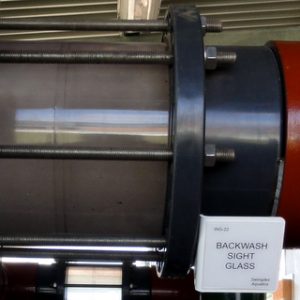Pool water is filtered and chemically treated in an effort to ensure any harmful organisms entering the pool water are rapidly either removed or inactivated so that the water will not transmit infections to bathers.
We regularly report on Council and School pools that are poorly designed and maintained. Because many pool water contaminants are microscopic in size, their presence in those pools often passes unnoticed, exposing bathers to potential health risks.
Pool water quality is dependent on the effectiveness of the following:
-
Pool Water Circulation
Water In the Pool
It is important for water in a pool to be regularly removed for filtration and chemical balancing. Poor water circulation in a pool creates bodies of stagnant water which are a potential health risk to bathers. A pool’s turn-over period is defined as the time taken for a volume of water equivalent to that of the pool’s to pass through the pool’s water treatment plant. Recently there has been a move to significantly reduce the turn-over period of pools, in an effort to improve pool water quality. Reduction in a pool’s turn-over period adds significantly to a pool’s cost of construction, and will be largely wasted if there is not good even circulation of water in the pool.
Pool Surface Water
Pool shells were first designed to have a top water level approximately 100mm below the top of the pool wall, and were said to have 100mm of free-board. This allowed the pool water level to rise as bathers entered the pool and then lower when they left. It also meant that if the pool shell rose or dropped on one side (e.g due to movement of the supporting ground) pool water quality was largely unaffected. Initially, free-board pools had wall and/or floor mounted inlet and outlet pipes to return water to the pool after water treatment and to take water from the pool for water treatment.
When it was discovered that the majority of pool water contaminants were in the pool’s surface water, an effort was made to remove pool surface water for treatment.
Scum gutters, constructed towards the top of the pool wall, were an early attempt at removing pool surface water. Pools with scum gutters were still designed with approximately 100mm of free-board. This meant that if the pool’s shell experienced differential vertical movement, although there was reduced removal of surface water, an even flow of water out of the pool could still be maintained, by slightly raising the pool’s top water level.
Skimmer boxes were developed to more reliably remove surface water, even after there had been differential movement in a pool’s concrete shell. They are now widely used in domestic and resort pools. Their use in municipal and school pools is only occasional because they do not provide uniform surface water removal for the entire length of a pool.
So-called “wetdeck edge” pools, where pool water is designed to flow uniformly over the side of a pool into a channel, provide the best opportunity for removal of a pool’s surface water. They also significantly reduce wave action in a pool’s side lanes and are now widely used in the construction of municipal and school swimming pools. “Wetdeck edge” pools that experience vertical differential movement in excess of ±2mm will not have a uniform flow of pool water for the full length of the “wetdeck edge”. As a result bodies of water in the pool will become stagnant creating a potential health risk for pool users. Our condition reports on pools with wetdeck edges regularly include this problem.
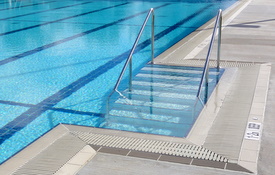
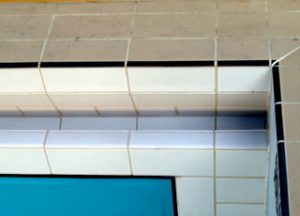
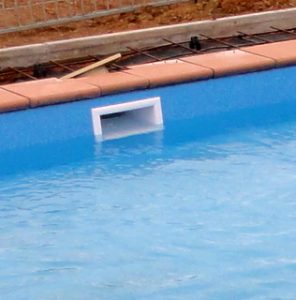
-
Pool Water Filtration
Good pool water filtration will reduce consumption of pool water chemicals and also the risk of bather infection from bacteria concealed within dirt particles suspended in the pool water. Our pool condition reports regularly identify substandard performance of pool filters, with associated potential health risks for pool users.
Sand Filters
Sand filters have been used over a very long period of time to cost effectively filter water for both drinking and use in pools. Recent independent research into the efficiency of sand filters has found that high rate sand filters with a small depth of sand (e.g. 300mm) can have efficiencies that are as low as 10%. Of course it is also important to ensure that when backwashing sand filters, the sand bed is cleaned. In our experience, reporting on the condition of large pools, filters are often not adequately backwashed. For the sand bend of a filter to be adequately backwashed, the sand bed must uniformly expand by approximately 20% to allow particles trapped in the top of the sand bed to be discharged to waste. Inadequate backwashing usually passes unnoticed due to current widespread use of pressurised sand filters, constructed without sight glasses built into the filter’s shell, to allow visual confirmation of sand bed expansion.
Gravity Sand Filters
Early sand filters allowed water to flow through the sand bed at a slow rate which was determined by the depth of water above the sand bed. Such filters were referred to as gravity sand filters. If well designed, constructed, operated and maintained, they are very efficient filters. With the top of the filter open, they allow confirmation of sand bed expansion during filter backwashing. Unfortunately gravity sand filters are very expensive to construct and are more complicated to operate and maintain than most pressurised sand filters. Incorrect operation and/or maintenance can adversely affect the efficiency of gravity sand filters. As a result, sand filters used on most pools are now closed pressure vessels.
Pressure Sand Filters
If well designed and constructed, pressurised sand filters can have the efficiency of a gravity sand filter and also be cheaper to manufacture and easier to operate. The efficiency of a sand filter is not easily determined. As a result, over the last 10 to 20 years in Australia, the flow rates through pressurised sand filters used on large pools have continued to increase and sand bed depths have continued to decrease, making pool water filtration cheaper, but significantly less efficient.
Diatomaceous Earth (DE) Filters
Diatomaceous earth (DE) filters have the ability to trap particles as small as 3 to 4 microns in size, which is significantly less than the 10 to 12 micron capacity of sand filters when they are used without a flocculant. DE filters have the ability to capture cryptosporidium oocyst and provide improved water clarity. DE filters are typically more expensive to install, run and maintain than sand filters.
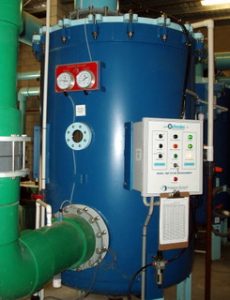
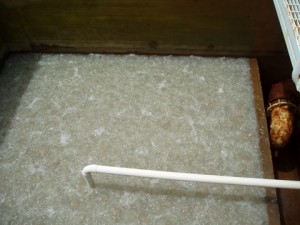
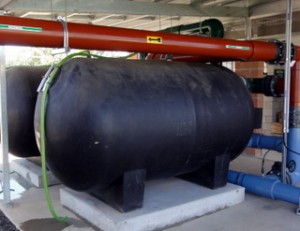
-
Pool Water Chemical Treatment
A disinfectant is used in pool water to prevent the transmission of infection to bathers. Other chemicals are added to pool water mainly to improve the efficiency of the disinfectant.
Pool Water Disinfection
For disinfection to be effective, pool water needs to be clear and free from suspended material which could provide shelter for microorganisms from the disinfectant. There are many ways to disinfect pool water, including the following:-
- Chlorine-based Disinfectants
- Chlorine Gas
- Sodium Hypochlorite
- Calcium Hypochlorite
- Chlorinated Isocyanurates
- Chlorine Dioxide
- Bromine-based Disinfectants
- Ozone
- Ultraviolet Radiation (UV)
Experience is required to select the correct disinfectant solution for a pool.
- Chlorine-based Disinfectants
-
Pool Water Conservation
Recent shortages of potable water supplies throughout Australia has prompted consideration of ways large pools can be designed to minimise water consumption. Most attention has focused on minimising water used to backwash filters. However in our experience reporting on the condition of large pools, pool water loss from leaking pool shells and broken pool water circulation pipes is considerably more than the water used to backwash sand filters. Chemically treated and often heated pool water can also be lost in large quantities, through the overflows of balance tanks in poorly designed and poorly operated pools. Few pools have water meters correctly positioned to quantify such water losses. Loss of water through both leaks in the pool shell and pool pipework can be minimised and possibly eliminated by having a pool designed by an experienced pool engineer.
